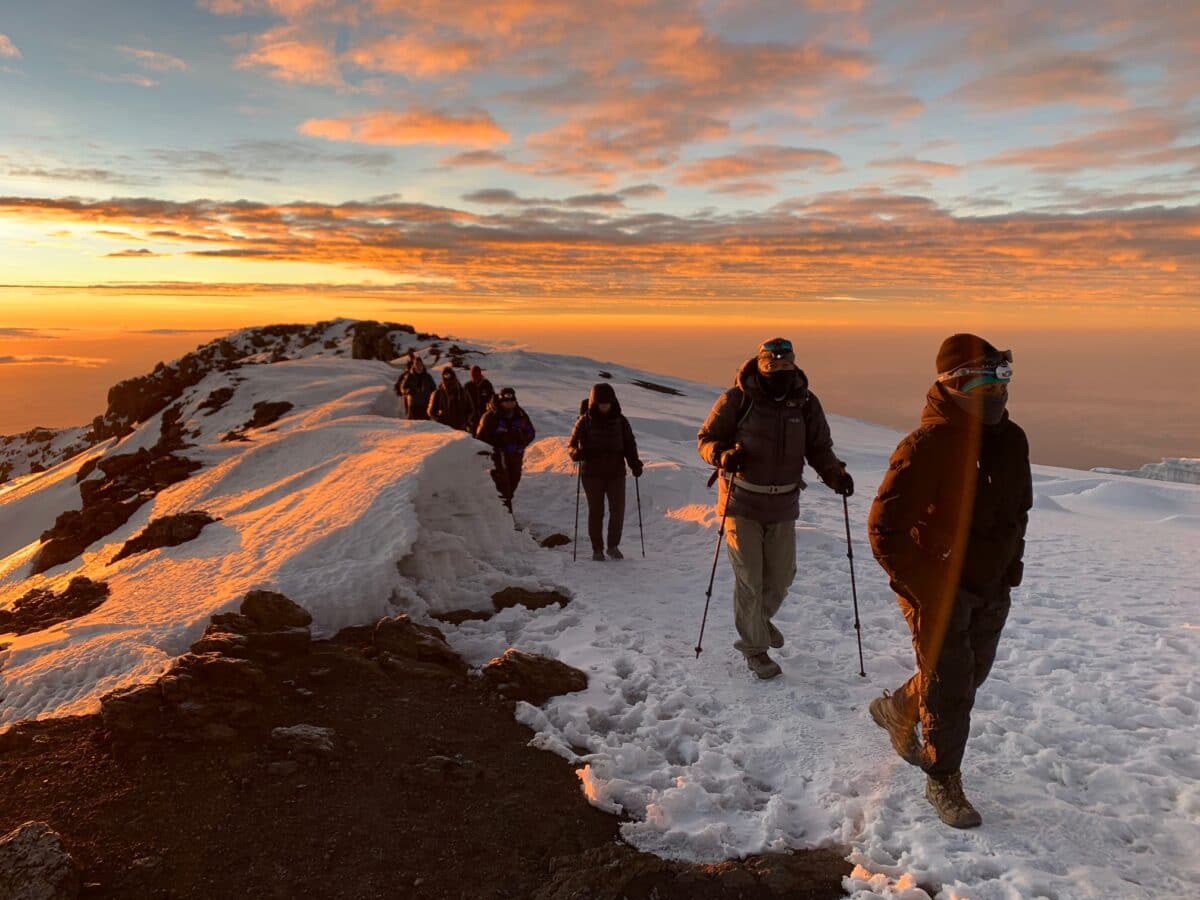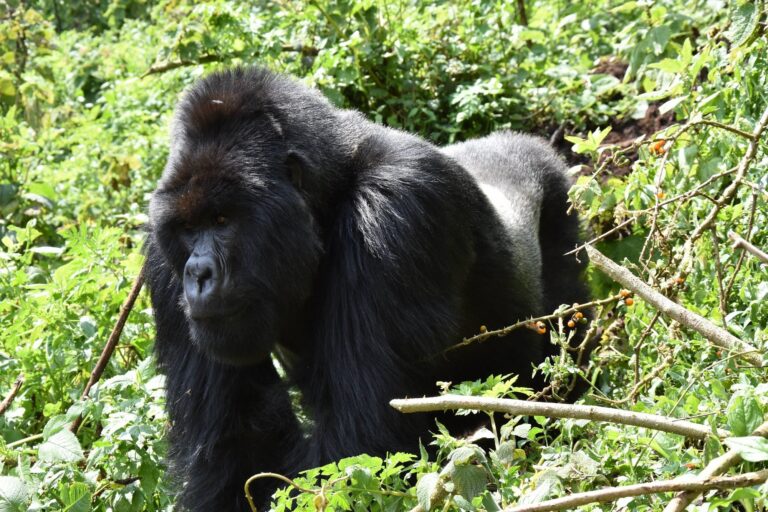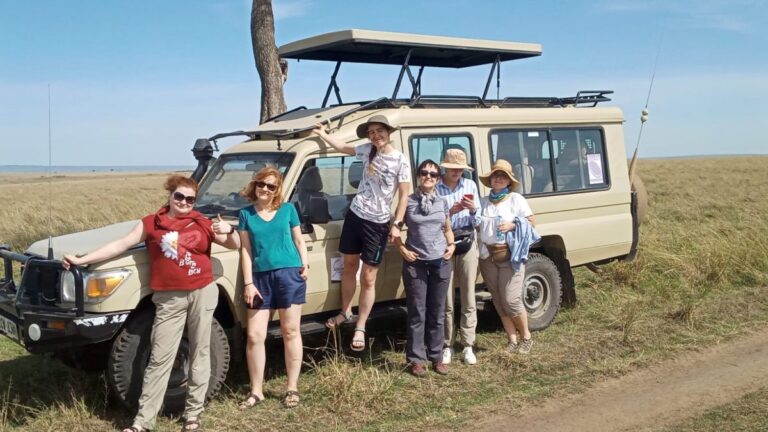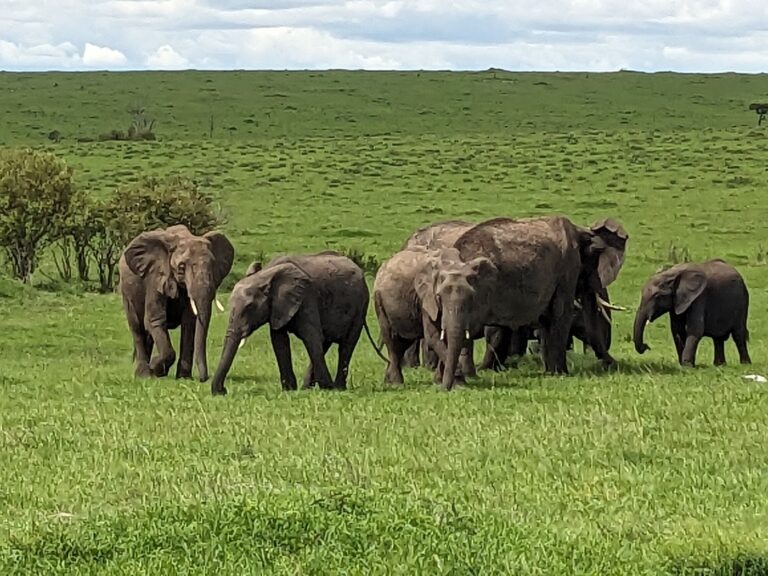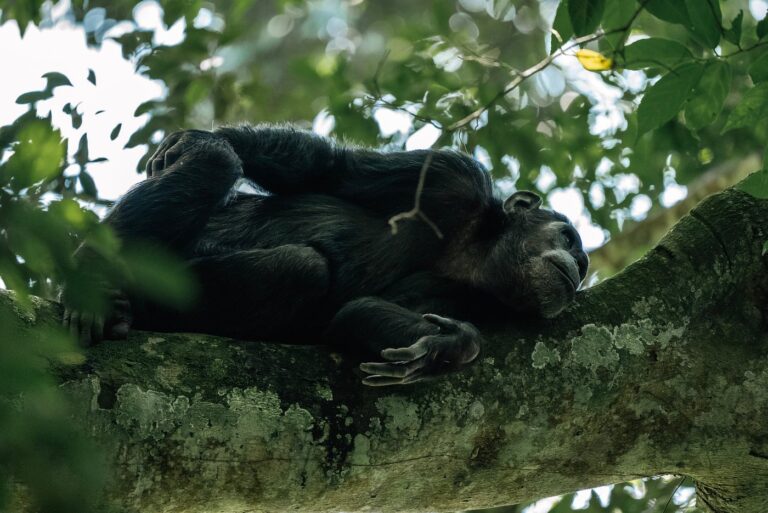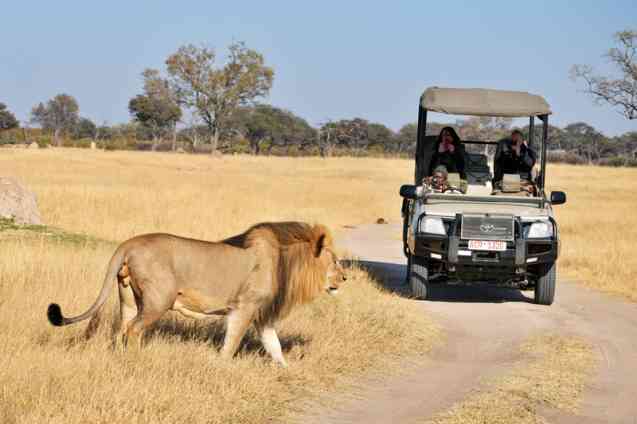Mount Kilimanjaro Hiking
Mount Kilimanjaro, Africa’s highest mountain and the World’s highest free-standing mountain, is perhaps also the most popular Mountain on the Continent, and recent estimates indicate that it is about 2.5 million years old. Consisting of three volcanic cones (Kibo, Shira, and Mawenzi), this 5895-meter-tall mountain was formed by volcanic eruption along the East African Rift system millions of years ago, leading to the rise of molten magma through the fractured Earth’s crust.
Mount Kilimanjaro lies in Northern Tanzania, close to the Kenyan border, with its highest peak (at 5895 meters above sea level) on the Kibo volcanic cone. Being the highest Mountain in Africa, it captures the imagination of mountaineers Worldwide, including celebrities such as Jessica Biel, Lupe Fiasco, and Eugene Kaspersky, among others. Ludwig Purtscheller, an Austrian mountaineer, and Hans Meyer, a German geographer, were the first European Explorers to summit the peak of Mount Kilimanjaro in 1889.
Best time for Mount Kilimanjaro climbing tours
Africa’s highest mountain offers a formidable challenge for climbers, and choosing the perfect season for an ascent is important for safety and success. Most Mount Kilimanjaro climbing tours start in June to September, then in December to February. These months are part of the dry season.
- Dry season: This is considered the best time for a Mount Kilimanjaro climbing tour because during this time, the weather begins to warm up, and harsh wet conditions begin to subside. Temperatures rise over the course of this season, and these stable weather conditions bring clear skies and provide excellent visibility for climbers.
- Wet season (March to May, and November): The wet season on Mount Kilimanjaro is arduous and dangerous due to heavy downpours and the risk of avalanches (although not widespread across all routes), mudflows, rockfall, and landslides. Additionally, fog and cloud cover obstruct visibility, hence making navigation challenging. However, this doesn’t mean that there are no Mount Kilimanjaro climbing tours in the wet/rainy season.
Preparing yourself for a Mount Kilimanjaro climbing tour
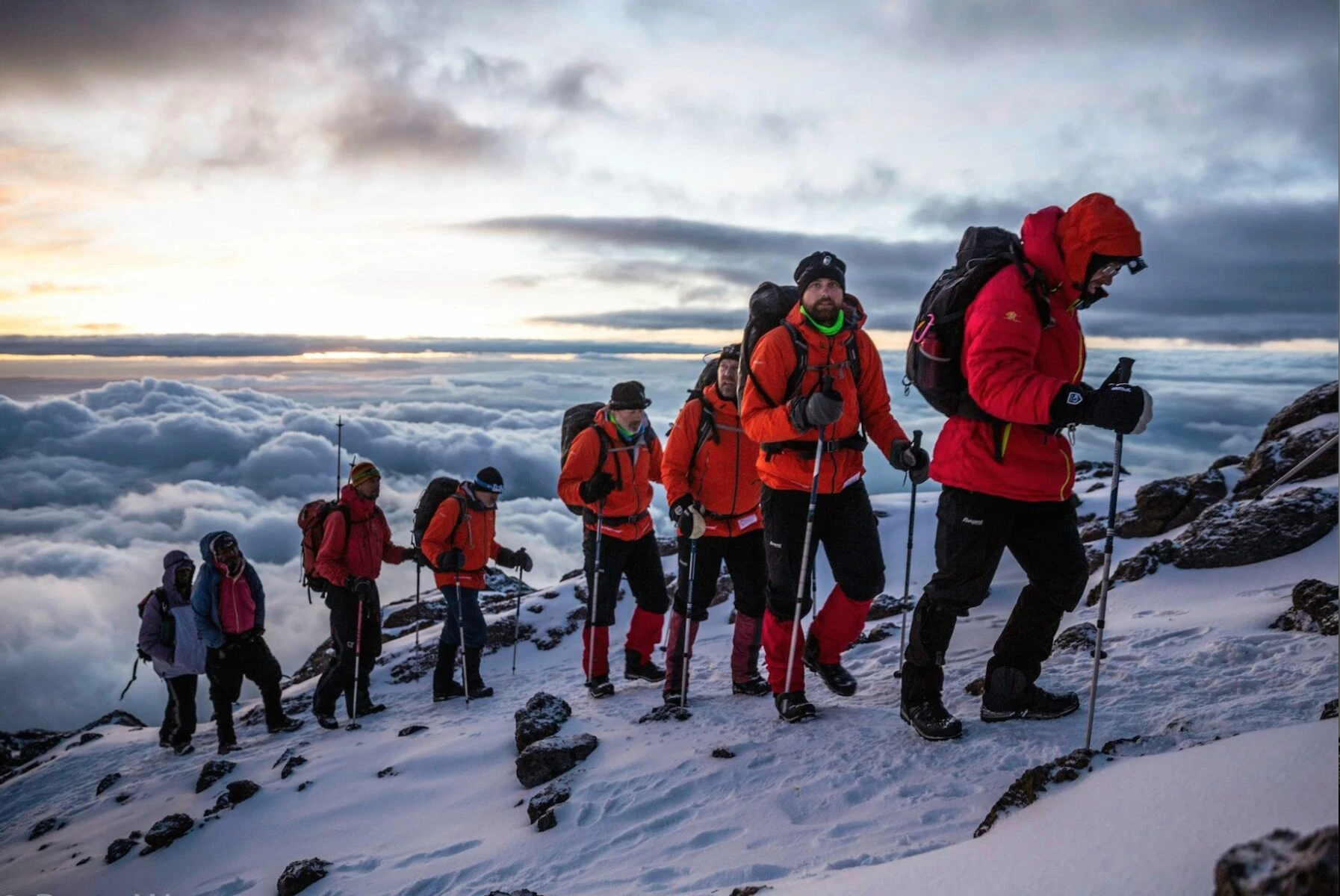 Mount Kilimanjaro climbing tours require mental and physical preparation to attempt the 5895-meter peak. If you are a passionate person, you need at least 12 months of preparation to take on this challenge.
Mount Kilimanjaro climbing tours require mental and physical preparation to attempt the 5895-meter peak. If you are a passionate person, you need at least 12 months of preparation to take on this challenge.
Consider that besides muddy and slippery forest trails, exhaustion and high-altitude illnesses can lead to accidents on Mount Kilimanjaro. Being fit not only reduces oxygen consumption but also leads to a successful ascent and descent. Additionally, you need to be better prepared for unexpected bad weather, even when you are climbing in the dry season.
Equipment for Mount Kilimanjaro climbing
Summiting to 5895 meters above sea level isn’t a joke, and for this reason, it is important to bring only the must-have essentials for this climbing tour. Also, it doesn’t make sense to bring all items, gear, and equipment from your country, as you can buy/hire from Arusha or the base for moderate prices. Some of the must-have equipment include;
- Head– a warm hat that can cover your ears and keep you warm, a fleece hat, a headlight with extra batteries, and others.
- For your Face, you will need a sunscreen and Glacier optics for snow reflections and avoiding UV rays.
- Hands: You will need waterproof and breathable insulated summit gloves, heavy gloves for the high altitudes.
- Body: You need lightweight cotton safari pants for trekking/climbing, a windproof jacket for extreme snow and wind, cotton t-shirts a warm jacket to provide an extra layer, gaiters for trekking boots (these are used over the boots to avoid soil and snow from entering the boots), heavyweight synthetic pants, underwear, and insulated down jackets with full side zips for the bathroom.
- Footwear: For your Mount Kilimanjaro climbing tours, you will need a slippery for walking around Camps/Huts, sturdy hiking boots for hiking through the trails in the Mountains, wool or synthetic socks, and others.
- Essential gears: These include a Swiss knife, climbing harness for attaching to a climbing rope, a GPS tracker, locking and non-locking Carabiners, Ice ax (e) with a pointed spike, Satellite phone, Crampons that fit your hiking boots perfectly for easy mobility on ice and snow, trekking poles, a lightweight, adjustable, and ventilated helmet, and tape slings among others.
- Toiletries and medications: For your Mount Kilimanjaro climbing tour, it is recommended to have a biodegradable multi-purpose soap, toothbrush and toothpaste, a re-usable water bottle, face and body moisturizer, female hygiene products, tissue/toilet paper roll, hand wash/sanitizer, deodorant floss, nail clippers, hair comb/brush, medications (cold and cough, first aid tapes and plasters, anti-diarrhea tablets, antibiotics, and anti-altitude sickness pills).
- Personal items: your cell phone, cash, a good camera with extra batteries and memory space, a notebook and pen, and a pair of binoculars.
- Essential documents: You will need a copy of your passport, International flight tickets, medical/travel insurance documents, accommodation booking, and emergency contact numbers, among others.
Mount Kilimanjaro climbing routes
Seven climbing routes run through different areas of Mount Kilimanjaro, and your choice depends on the time frame, budget, fitness levels, and experience.
- Marangu Route: Considered one of the easiest, this 70-kilometer-long route usually lasts 5-6 days for a round trip. Accommodations along this route are in the form of rustic huts with dormitory-style beds. Although it is considered the easiest, it can be more difficult to acclimatize to the altitude.
- Machame route: This 61-kilometer route is considered the most scenic and usually takes 6-7 days to complete, with a diversity of scenery. It has higher altitude days with lower altitude Camps, as well as good acclimatization options, hence making it one of the most popular routes.
- Shira Route: Starting at 3600 meters above sea level, this 58-kilometer route takes 6-8 days to complete the round trip. However, there are higher chances of altitude sickness along this route, and it connects with the Machame route on the third day. Additionally, it is more costly than the Marangu and Machame routes due to its remote trailhead and is usually replaced by the Lemosho route.
- Lemosho Route: This 67-kilometer route was established as an alternative hike to the Shira Route, and has a better success rate with 7-8 days for a round trip. Being more scenic, it normally begins at a lower altitude and is less crowded than the Marangu and Machame routes. It will also interest you to know that it takes longer to drive to the trailhead.
- Rongai Route: This 74-kilometer route is the only approach from the North, hence visitors experience less rain along the route. It takes 6-7 days for a round trip and provides greater opportunities of spotting wildlife, but makes for a longer drive to the trailhead.
- Umbwe route: Considered the easiest of the 7 climbing routes on Mount Kilimanjaro, this 48-kilometer trail takes 6-7 days for a round trip, hence making it the shortest. However, it is also the steepest and most difficult route for many climbers, with the first day involving steep hiking. It will also interest you to know that the Umbwe route has the lowest success rate.
- The Northern Circuit: This 88-kilometer route starts along the Lemosho route, crosses the Shira Plateau, and then rotates around the Northern slopes instead of the busier Eastern approach. The route provides breathtaking views, but because of its length (8-9 days), it is considered the most costly option.
Accommodation options
While in Arusha, you can stay in selected accommodations that include Lake Duluti Serena Hotel, Siringit Villa by Mantis, Kia Lodge, Mount Meru Hotel, Mount Meru Game Lodge, Tulia Boutique Hotel & Spa, Arusha Coffee Lodge, Four Points by Sheraton Arusha, Arusha Safari Lodge, Gran Melia Arusha, Mrimba Palm Hotel, Arumeru River Lodge, Kili Villas, and Kibo Palace Hotel.
You will be staying at Tent Camps/or Huts while climbing Mount Kilimanjaro. The climbing team will ensure that these accommodations are prepared before you even get there. These Camps/Huts have the necessary things for a modest stay, such as Tents, mattresses, and pillows.
Getting to Mount Kilimanjaro
As soon as you confirm your Mount Kilimanjaro climbing tour, it is recommended to send us your flight details so we can meet you at Kilimanjaro International Airport. Our climbing tours include airport pick-ups so you can effortlessly navigate the beautiful Moshi and Arusha Cities.

